Jagannath
THe Lord Of The Universe
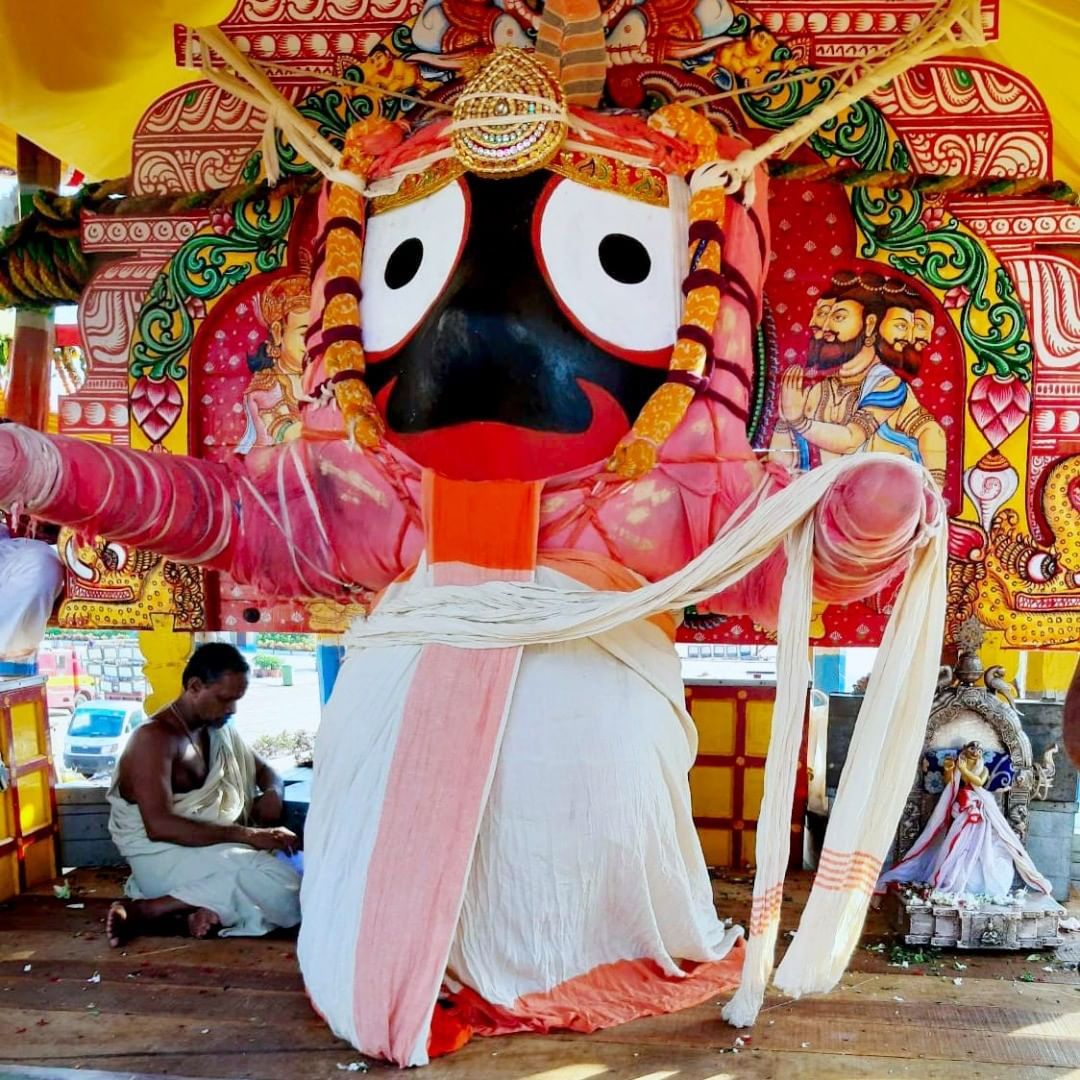
Whos is Lord Jagannath ?
The term “juggernaut” entered the English language long before Lord Jagannatha came to British shores. Describing an “irresistible force” or procession, “juggernaut” eventually became identified with mighty battleships – and now means a large lorry.
But the original Lord Jagannatha truly embodies an irresistible force, because He is none other than Krisna: the all attractive Lord of the Universe. And the annual procession of the Deity of Krisna in the form of Jagannatha carried on the Ratha chariot enacts one of the world’s oldest and largest festivals. A celebration dating back thousands of years in India. Rathayatra has spread to cities throughout the world since the late 1960’s.
One day as Indradyumna lamented that he was not able to serve God directly, a pilgrim suddenly appeared. This man revealed how he had actually seen the Lord accept direct loving service in His Deity form of Nila Madhava. God incarnates in many ways throughout the ages, and sometimes He manifests in the form of stone or wood just to please His devotees and accept their loving service.
The traveler described how, on the remote mountain top of Niladri, he had seen the demigods worshiping the Lord. The King immediately dispatched his chief brahminical priest, Vidyapati, to find this Deity, so that all of Avantipura could be presented at the lotus feet of the Lord as an offering of love.
After a month’s journey without rest, Vidyapati found Mount Niladri, where he discovered Sabaras, low-born pig herders, camped near the holy ground. Looking beyond class distinctions married the daughter of the tribal chieftain, Vishvavasu, who had been worshiping the Lord in great secrecy. Due to his daughter’s pleas, Vishvavasu finally agreed to show Lord Nila Madhava to Vidyapati – only if he went to the site blindfolded. But the brahmin tricked his father in law by sprinkling mustard seeds along the path, seeds that would eventually sprout and lead the emperor back to claim the Lord’s attention.
For many years Lord Nila Madhava had been served by Vishvavasu with simple fruits and flowers. Knowing the prayers of Indradyumna, Nila Madhava spoke to Vishvavasu and revealed His intention of accepting more opulent worship according the desires of Indradyumna. Vishvavasu was devastated.
No-one can predict the plan of the Lord; sometimes He bestows special mercy on His devotee by being present before them, and sometimes that mercy is also shown through separation which increases the longing and attachment of the devotee.
That the Deity was speaking to him did not strike Vishvavasu as remarkable, he was too much absorbed in grief at Nila Madhava’s imminent disappearance. He blamed Vidyapati for persuading Nila Madhava to accept Indradyumna’s worship. Accusing the brahmin of cheating him out of Cod’s favor, Vishvavasu bound Vidyapati with ropes. But his daughter heard her husband’s cries for help and freed him to return to Avantipura.
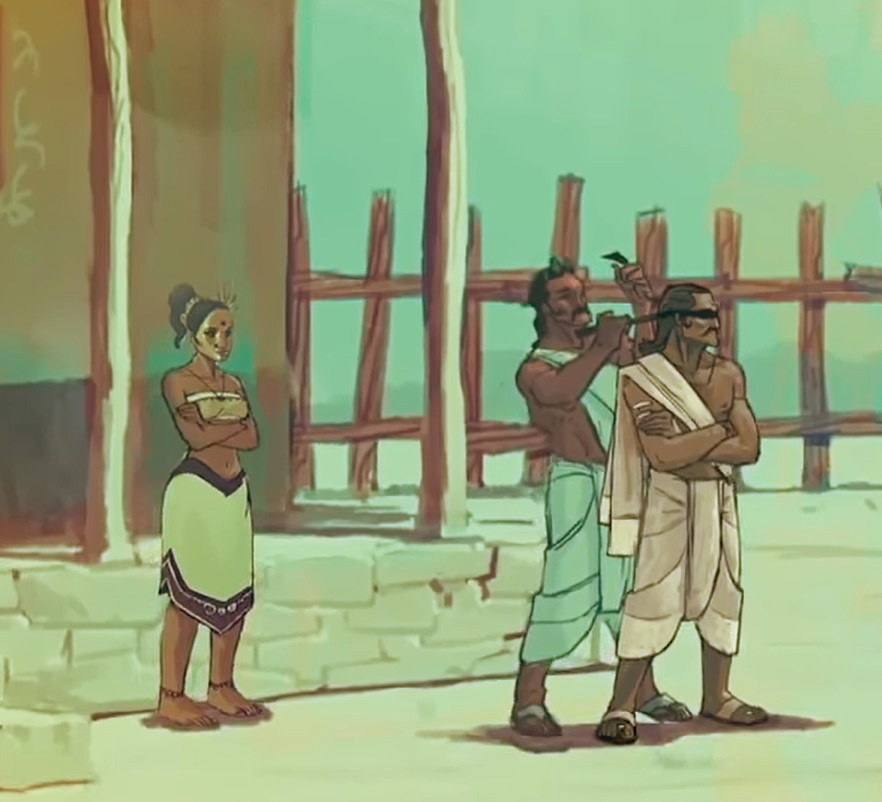
The Search Begins
One day as Indradyumna lamented that he was not able to serve God directly, a pilgrim suddenly appeared. This man revealed how he had actually seen the Lord accept direct loving service in His Deity form of Nila Madhava. God incarnates in many ways throughout the ages, and sometimes He manifests in the form of stone or wood just to please His devotees and accept their loving service.
The traveler described how, on the remote mountain top of Niladri, he had seen the demigods worshiping the Lord. The King immediately dispatched his chief brahminical priest, Vidyapati, to find this Deity, so that all of Avantipura could be presented at the lotus feet of the Lord as an offering of love.
After a month’s journey without rest, Vidyapati found Mount Niladri, where he discovered Sabaras, low-born pig herders, camped near the holy ground. Looking beyond class distinctions married the daughter of the tribal chieftain, Vishvavasu, who had been worshiping the Lord in great secrecy. Due to his daughter’s pleas, Vishvavasu finally agreed to show Lord Nila Madhava to Vidyapati – only if he went to the site blindfolded. But the brahmin tricked his father in law by sprinkling mustard seeds along the path, seeds that would eventually sprout and lead the emperor back to claim the Lord’s attention.
For many years Lord Nila Madhava had been served by Vishvavasu with simple fruits and flowers. Knowing the prayers of Indradyumna, Nila Madhava spoke to Vishvavasu and revealed His intention of accepting more opulent worship according the desires of Indradyumna. Vishvavasu was devastated.
No-one can predict the plan of the Lord; sometimes He bestows special mercy on His devotee by being present before them, and sometimes that mercy is also shown through separation which increases the longing and attachment of the devotee.
That the Deity was speaking to him did not strike Vishvavasu as remarkable, he was too much absorbed in grief at Nila Madhava’s imminent disappearance. He blamed Vidyapati for persuading Nila Madhava to accept Indradyumna’s worship. Accusing the brahmin of cheating him out of Cod’s favor, Vishvavasu bound Vidyapati with ropes. But his daughter heard her husband’s cries for help and freed him to return to Avantipura.
The Deity Vanishes
Upon Vidyapati’s return, Indradyumna climbed upon his chariot and led an army to the mountain, where they located the trail of tiny mustard plants. The two struggled with the temple door and discovered that Nila Madhava had vanished.
Only Vishvavasu could be suspected of removing the Deity. In his desperation to keep the Lord he might have done anything. However, when they found the chief of the Sabaras, he was still mourning Nila Madhava’s departure. Not believing his lament they arrested Vishvavasu. Suddenly Narada Muni, a great sage, appeared and revealed what had really happened to Nila Madhava.
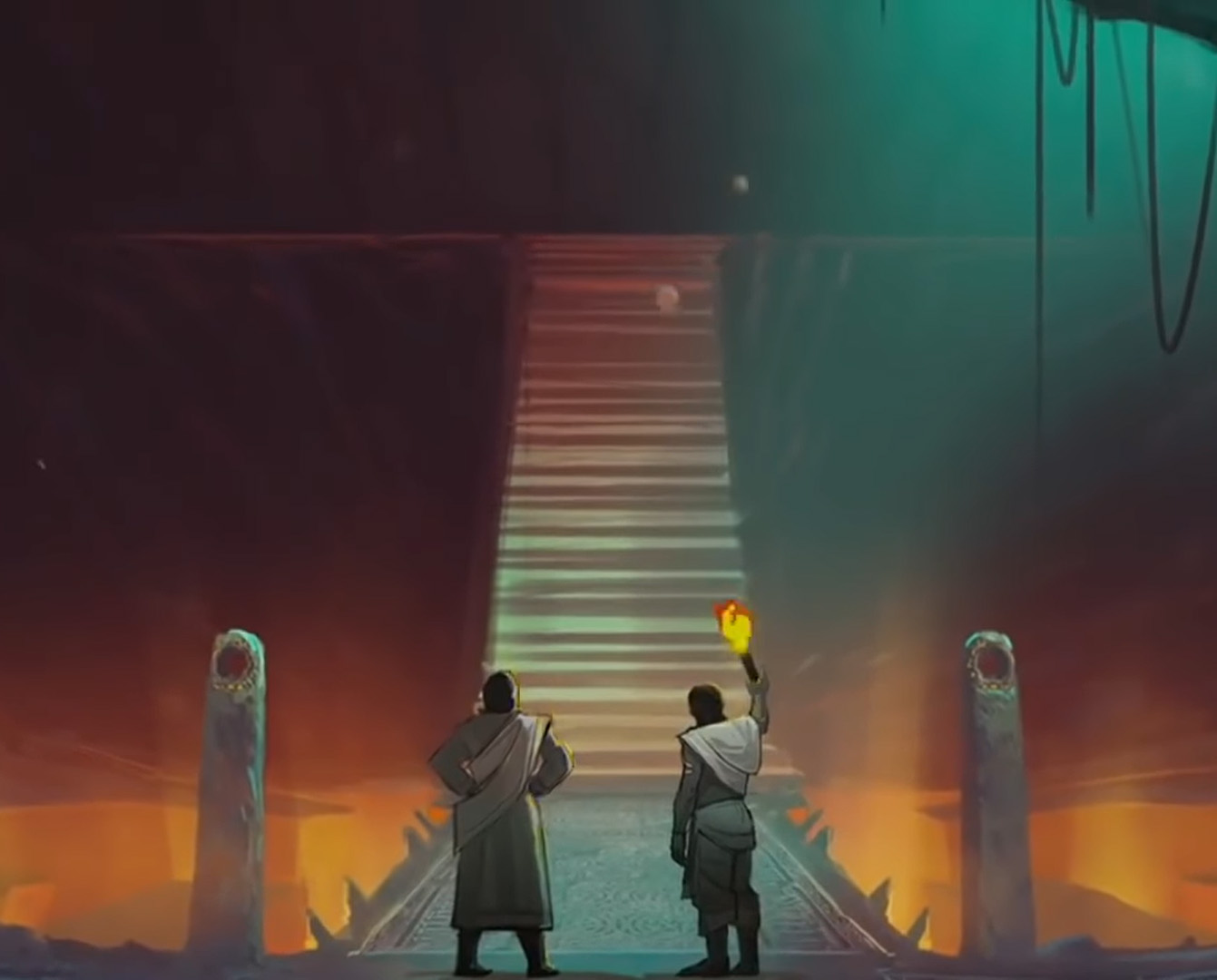
The Lord had withdrawn due to His own choosing, but He would re-appear again in the form of Lord Jagannatha to bestow benedictions upon the entire world. Whereas Nila Madhava had enjoyed the simple and intimate service of Vishvavasu, His appearance as Jagannatha would be for the benefit of everyone. First, however, Narada Muni announced that a great temple must be constructed. Then Lord Brahma, chief of the demigods, would receive Indradyumna on his own planet and plan for the sacred installation of Jagannatha Swami, the Lord of the Universe.
When the temple was finally completed, Narada Muni escorted Indradyumna to his father’s abode on Satya-loka. The home of Lord Brahma is inaccessible to ordinary human beings, but so great was Indradyumna’s devotion to God that even Lord Brahma was eager to meet him. Lord Brahma further described how Lord Jagannatha would appear in a wooden form from a great kalpa-vrksa tree, transported from the spiritual planet of Svetadvipa.
As Indradyumna returned to earth in a space ship from Brahma’s planet, he noticed that things had changed. Though he was away for what seemed a short time, the earth had aged many years. No one recognized him in his own kingdom, and his trusted priest Vidyapati had been replaced by another.
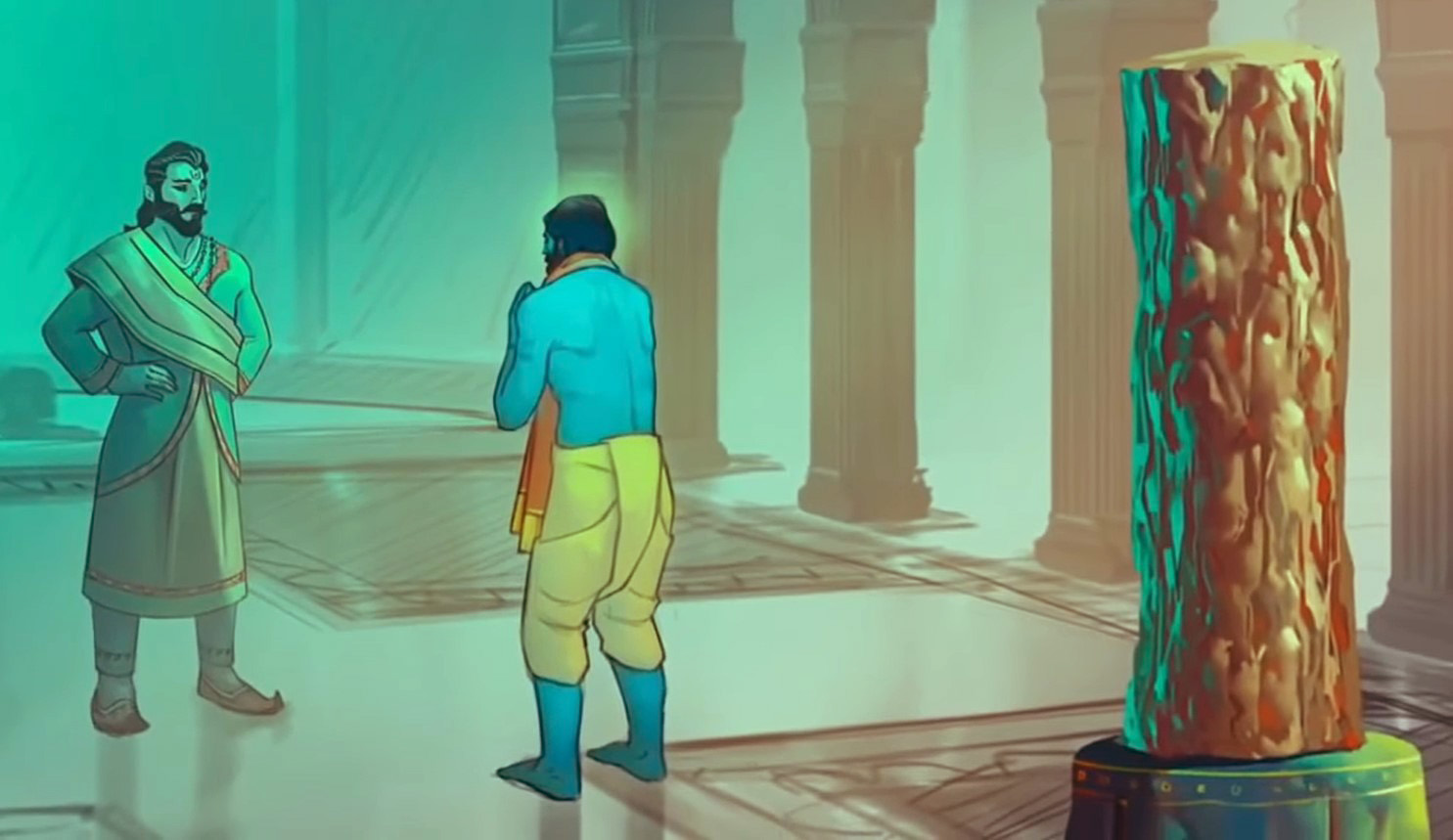
The Sacred Tree
The King remained bewildered until a mystical crow revealed how all Indradyumna’s associates had died in his absence. For the sake of worshiping the Supreme he had lost everything: family, friends, and kingdom.
Despite this hardship, Indradyumna remained steadfast in his courage. He knew that God sometimes tests the love of His devotees by removing all other objects of affection. King Indradyumna was determined to hasten the Lord’s arrival by fasting, if necessary until death. Then Jagannatha did appear – but only in a dream – and the emperor was guided to a great log floating in the ocean. No ordinary tree, this giant had come uprooted from the spiritual sky, part of the same transcendental energy as the Lord’s own body. Even the might of the army could not budge it.
A lowly Sabara stepped from the crowd and handled the huge trunk with ease. This amazing fellow turned out to be a descendant of Vishvavasu, and he carried the sacred log to Gundica Temple for preparation.
The greatest craftsmen in all the world assembled to carve the Lord’s Deity form, according to scriptural injunctions. But all their tools simply shattered to pieces. Then a mysterious old brahmin appeared, Ananta Maharana, and he agreed to carve the Deity of the Lord. But it had to be done on his own terms: complete isolation for three weeks. Gates were locked and the beat of the chisel resounded for days. After only two weeks however, it stopped and Indradyumna worried. The brahmin was old, perhaps…
Jagannatha’s Appearance
Overcoming the restraints of priests and advisors, the King wrenched open the doors to discover an unusual sight: a form of the Deity never before seen. The Lord’s form was apparently unfinished having no hands or feet, and the Emperor feared he had made a great mistake in opening the doors too early. The aged sculptor had vanished.
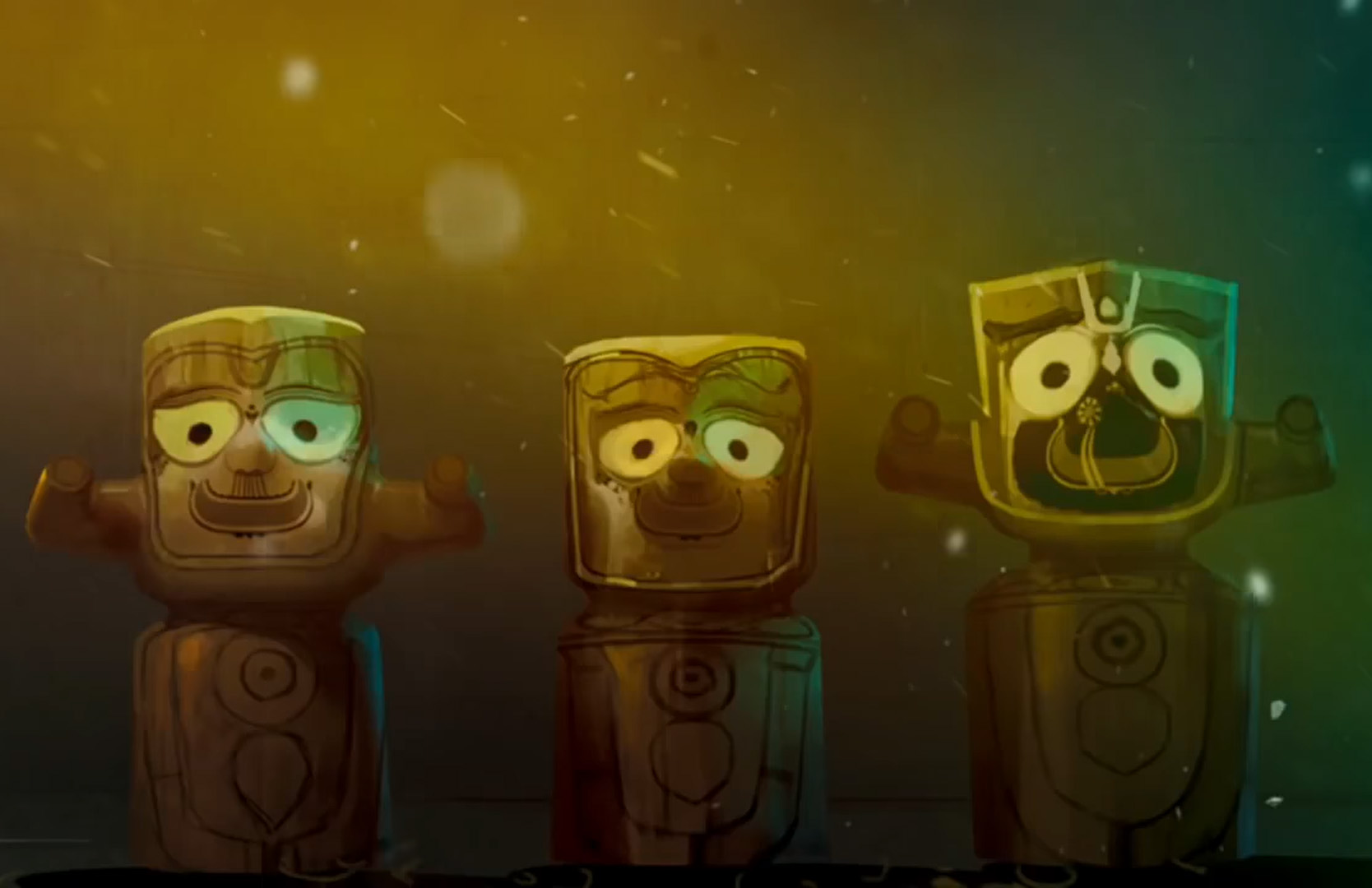
As Indradyumna cursed his foolishness, new found friends tried to console him. The descendant of the Sabaras said, “Whatever happens is by the Lord’s will. You acted out of love so there can be no wrong.” And the chief priest said that the Deity of Jagannatha, along with His brother, Baladeva, and sister, Subhadra, should be painted and dressed and prepared for the installation ceremony by Lord Brahma.
Indradyumna felt ashamed until God’s plan was finally revealed by Narada Muni. A passage in the Vedas mentions that the Lord has no hands or feet, which impersonalists and atheists interpret to deny the Lord’s personal existence. So Jagannatha’s appearance proves that He is a person – unlike any other – and that He can still bestow blessings and accept offerings of love, even without hands and feet.
Narada Muni then described how he had seen this form before, while visiting Dvaraka. At that time, the Lord’s Vrindavan pastimes were being discussed, and the Lord overheard the conversation and felt loving separation for His devotees. He went into a trance and His eyes opened wide, His feet and hands retracted into His body. Sharing in this transcendental exchange, Krisna’s sister and brother were similarly transformed.
Then, Narada Muni announced that his father, Lord Brahma, would soon arrive to install the Jagannatha Deity. Before the celebration began, Brahma gave Indradyumna divine vision to see that his new friends were, in fact, the embodied souls of his old companions Vidyapati and Vishvavasu. Thus the story of Jagannatha’s appearance ended happily, with the reunion of loving devotees to honor and serve the Lord.
After thousands of years, the Jagannatha Deity remains a source of unlimited joy to His friends and servants. And the Rathayatra procession is a time to celebrate the loving exchange between the Personality of Godhead and His devotees. All those who take part in this festival will receive His special blessings and help on their journey back home, back to Godhead.
Hare Krisna. Jagannatha Swami Ki Jaya!
Visit source
